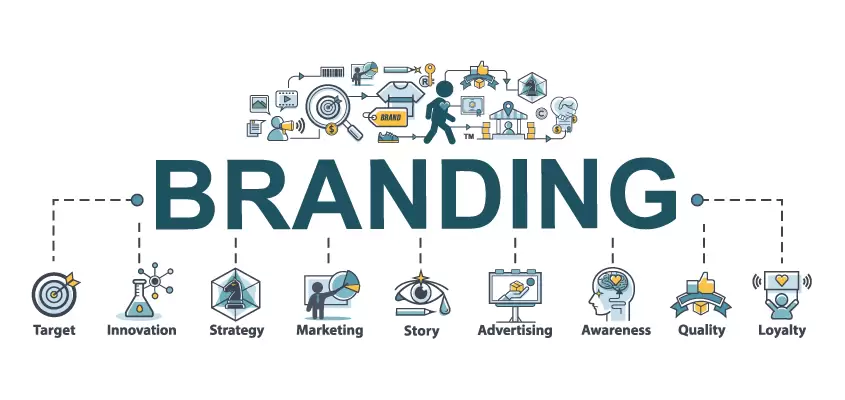Our Blog
Crafting a Winning Employment Brand: Lessons from Top Companies

Attracting and retaining top talent is a challenge faced by companies of all sizes and industries. To stand out in this crowded landscape, organizations must invest in their employment brand. Employment branding is the process of creating a compelling and unique image as an employer to attract and retain the best talent. To understand the nuances of employment branding, let’s explore lessons from successful companies that have mastered this art.
Lesson 1: Authenticity Matters
One common thread among companies with strong employment brands is authenticity. Authenticity means aligning your brand’s promises with the actual employee experience.
Example: HubSpot
HubSpot, a leading inbound marketing and sales software company, is known for its transparent and employee-centric culture. Their “Culture Code” document, available online, openly discusses their values and workplace expectations. This transparency helps them attract candidates who resonate with their culture.
Lesson 2: Employee Advocacy Builds Trust
When employees become advocates for their companies, it can significantly impact employment branding. Encourage employees to share their experiences, not just externally, but internally as well.
Example: Microsoft
Microsoft has a robust employee advocacy program. They empower their workforce to be brand ambassadors, sharing their experiences on social media and contributing to Microsoft’s positive image as an employer.
Lesson 3: Focus on Career Growth
Top talents are often looking for opportunities to grow in their careers. Companies that provide clear paths for career progression are more likely to attract and retain these individuals.
Example: Salesforce
Salesforce, a global leader in customer relationship management (CRM), is known for its strong emphasis on career development. They offer extensive training programs, mentorship opportunities, and a well-defined career path for employees. This focus on growth has helped Salesforce become a talent magnet.
Lesson 4: Innovative Perks and Benefits
Innovative perks and benefits can set your employment brand apart. While not all companies can offer extravagant benefits, creativity in this area can go a long way.
Example: Google
Google is famous for its unique and innovative workplace perks. From free gourmet meals to on-site fitness centers and massages, these perks contribute to Google’s reputation as a fun and employee-friendly workplace.
Lesson 5: Diversity and Inclusion
Diversity and inclusion are not just buzzwords; they are integral to modern employment branding. Companies that prioritize diversity tend to have stronger employment brands.
Example: IBM
IBM’s commitment to diversity and inclusion is evident through their various initiatives and programs. They actively promote diversity in their hiring, leadership, and throughout their organization, contributing to their image as an inclusive employer.
Lesson 6: Tell Your Story Creatively
Employment branding involves storytelling. It’s about conveying your company’s values and culture through creative and engaging narratives.
Example: Apple
Apple excels at storytelling. Their “At Apple, we’re all about innovation” campaign not only showcases their commitment to innovation but also tells a compelling story about their work environment.
Lesson 7: Data-Driven Decision Making
Leading companies are increasingly using data and analytics to refine their employment branding strategies. They track metrics such as candidate satisfaction, time-to-fill positions, and employee retention rates to make informed decisions.
Example: Amazon
Amazon uses data extensively in its HR practices. They analyze data to identify trends, streamline recruitment processes, and ensure they are hiring the right talent for the right roles.
Lesson 8: Adapt and Evolve
Finally, successful companies understand that employment branding is an evolving process. What worked yesterday may not work tomorrow. Staying flexible and open to change is crucial.
Example: Tesla
Tesla’s employment brand is strongly influenced by Elon Musk’s vision. As the company evolves and grows, they continue to adapt their branding to reflect their changing culture and goals.
Conclusion
Building a strong employment brand is an ongoing journey that requires dedication, creativity, and adaptability. By learning from successful companies like HubSpot, Microsoft, Salesforce, Google, IBM, Apple, Amazon, and Tesla, we can glean valuable insights to craft our unique employment branding strategies. Remember, authenticity, employee advocacy, career growth, innovative perks, diversity, storytelling, data-driven decision-making, and adaptability are key elements that can help your organization stand out in the competitive talent market.
Unveiling Bias: The Risks of AI in Recruiting
Gen Z Dynamics in the Workplace: Strategies for Engaging Younger Talent
Understanding and Managing Interview Anxiety
The Importance of Leadership Perception in Attracting Top Talent
Should Companies Be Held Accountable for Lack of Truth in Recruiting Ads?
Embracing Flaws: The Significance of Honoring Candidates Who Openly Share Imperfections
With great vision, you need great people
Looking for higher-level career opportunities in Greater Boston and throughout Massachusetts?
